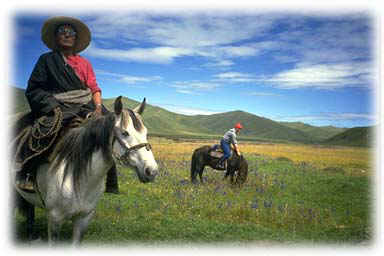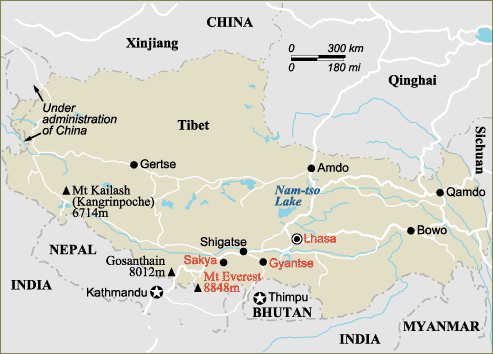|
||||||||
|
|
|
Tibet
Locked away in its Himalayan fortress, Tibet has long exercised a 'Shangri-la' type hold on the imagination of the West. A 'Land of Snows', the 'Rooftop of the World' is mysterious in a way that few other places are. Tibet's strategic importance, straddling the Himalaya between China and the Indian subcontinent, made it irresistible to China, which invaded in 1950. But Tibetans have never had it easy. Theirs is an unforgiving environment, and human habitation has always been a precarious proposition. Even so, the deliberate cultural strangling inflicted by the Chinese government since 1950 rates as the harshest burden Tibet's native inhabitants have been forced to endure. Following virtual closure after the Chinese annexation of the Buddhist kingdom, Tibet was opened to foreign tourism in 1984. It was closed to all but tour groups in 1987 after an uprising by Tibetans in Lhasa, and reopened in 1992. Travel in Tibet comes with some ludicrous permit requirements. The present Chinese policy on individual tourism in Tibet seems to be one of extorting as much cash as possible from foreigners, but not so much as to scare them off completely.
Efforts to preserve Tibet -- its environment, its people, and their culture -- come in two forms: direct preservation projects involving Tibetan people and those who support their efforts, and educational projects providing resources for people, mainly non Tibetans, who want to learn more about Tibet or some aspect of its culture. A vivid example of the success of the latter approach is the rapid spread of Tibetan Buddhism and the Way of Shambhala into Western countries, fueled by the avid interest of Western students hungry for genuine spiritual insight. Fortunately, many of the most accomplished Tibetan Buddhist meditation masters were able to escape from Tibet during the invasion, and to bring with them many of their treasured scriptures, art works and ritual implements. Direct help is needed, as well. For example, it is not enough to save examples of religious paintings in museums -- the skills involved in creating the paintings must be passed on from teacher to student, along with the understanding of the meaning of the images and their function in the meditation practice -- but Tibetans living in countries where they are allowed to really practice Buddhism simply cannot afford to devote their time and energy to dharma study and art work, unless someone helps to pay their living expenses. In old Tibet, the tradition of supporting monks and nuns and monasteries was strong. In setting our
goals we should face certain realities af the current situation: It is
highly unlikely that classical Tibetan culture will survive anywhere,
even in free countries. Given the choice, many Tibetan people appreciate
Western medicine and other aspects of Western culture. A more realistic
goal would simply be to protect their lives, and to restore their
freedom to live by their own choices; and to make available, to anyone
who may be interested, the insights and wisdom of this amazing culture.
|




